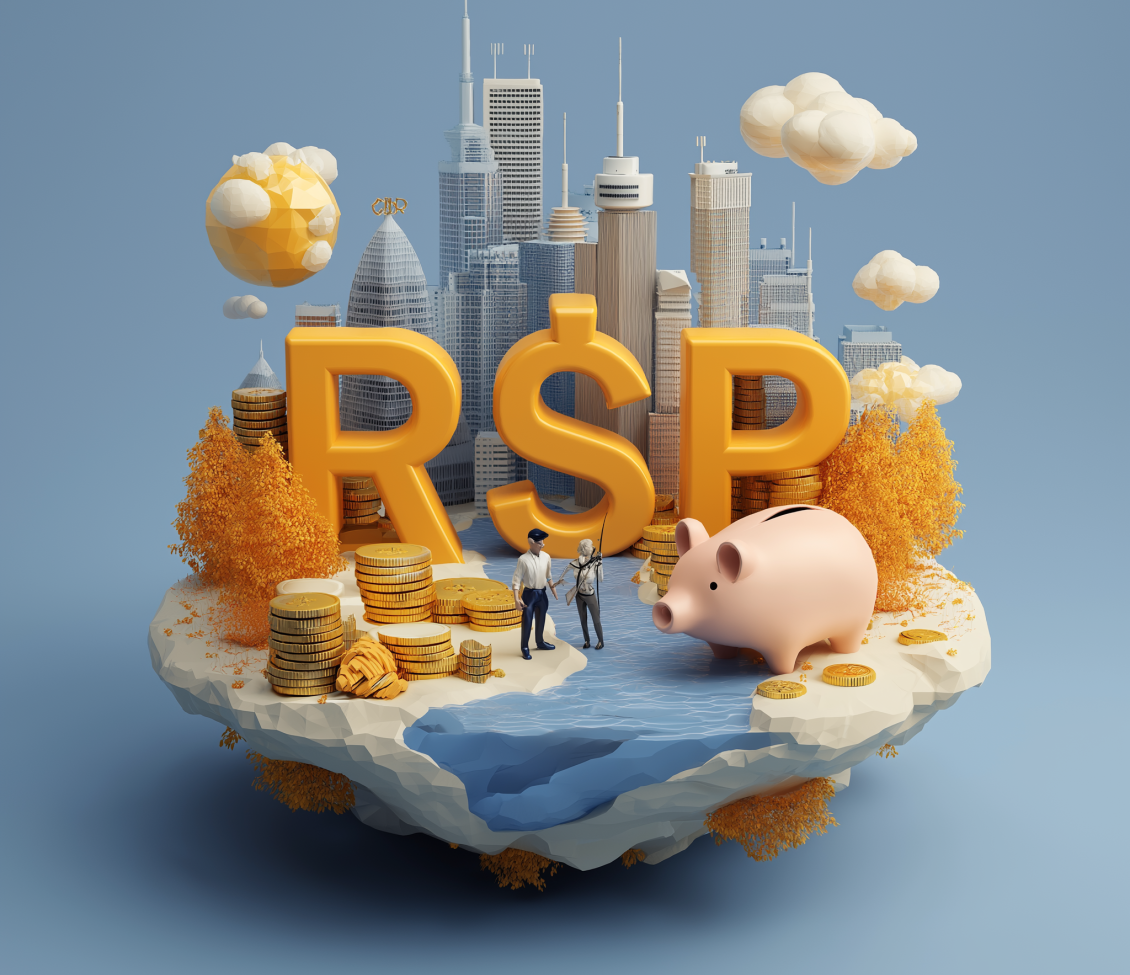RRSP 101

A Beginner’s Guide to Smart Saving in Canada
Are you ready to take control of your financial future? If you’re new to the world of Registered Retirement Savings Plans (RRSPs), you’ve come to the right place! In this guide, we’ll break down everything you need to know in an easy-to-read and engaging way.
Let’s get started!
What is an RRSP?
In short, an RRSP is a special savings account designed to help Canadians save for retirement. But that’s not all—it comes with some pretty awesome benefits!
✅ Tax savings now: Any money you contribute to an RRSP is tax-deductible, meaning you can lower your taxable income and potentially get a bigger tax refund.
✅ Tax-free growth: Your investments grow tax-free inside the RRSP, so you don’t pay taxes on your earnings until you withdraw the money.
✅ More than just retirement: Your RRSP can also help you buy your first home or go back to school!
Intrigued? Let’s dive deeper!
How Does an RRSP Work?
The RRSP is a flexible savings tool with powerful benefits. Here’s how it works:
- Who can open one? Any Canadian with earned income who files a tax return can open and contribute to an RRSP.
- How long can you contribute? You can contribute to your RRSP until December 31 of the year you turn 71. After that, you must either withdraw the money or convert it into a Registered Retirement Income Fund (RRIF) or annuity.
- Where can you open an RRSP? RRSP accounts can be opened at banks, credit unions, mutual fund companies, investment firms (for self-directed RRSPs), and life insurance companies.
Types of RRSPs
There isn’t just one type of RRSP—there are options to suit different financial goals:
- Individual RRSP: You save for your own retirement.
- Spousal RRSP: You contribute to an RRSP for your spouse, which can help reduce your combined tax burden.
- Group RRSP: Your employer may offer this plan and match a portion of your contributions.
You can hold multiple RRSP accounts, but your total contributions cannot exceed your contribution room.
What Can You Invest in an RRSP?
An RRSP isn’t just a basic savings account—you can invest in a variety of assets to grow your money faster! Eligible investments include:
- Cash & GICs
- Stocks & Bonds
- Mutual Funds & ETFs
- Gold & Silver
Your choice depends on your risk tolerance and how long you plan to keep your money invested.
Why Should You Use an RRSP?
Beyond retirement savings, RRSPs offer several benefits:
- Tax Deductions: Contributions reduce your taxable income, which means you might owe less in taxes or get a larger refund.
- Tax-Free Growth: You don’t pay taxes on earnings while your money stays in the RRSP.
- Tax Deferral: Since you won’t pay tax on your contributions until you withdraw them (likely in retirement when your income is lower), you save money in the long run.
- Spousal RRSPs for Tax Savings: If you earn more than your spouse, you can contribute to a spousal RRSP to lower your combined tax bill.
- Buy Your First Home with Your RRSP: You can withdraw up to $60,000 tax-free through the Home Buyers’ Plan (HBP) to help with your first home purchase.
- Pay for School with Your RRSP: The Lifelong Learning Plan (LLP) allows you to withdraw up to $20,000 for education expenses, with a $10,000 yearly cap.
- Transfer Funds to an FHSA: If you’re saving for a home, you can move RRSP funds into a First Home Savings Account (FHSA) tax-free (as long as you have FHSA contribution room).
How Much Can You Contribute to an RRSP?
Your RRSP contribution room is based on your income and past contributions. To find your personal limit, check your latest Notice of Assessment on the CRA’s My Account portal.

Two key numbers to look at:
- Unused Contribution Room: If you didn’t max out your RRSP in previous years, your room carries forward.
- Annual Contribution Limit: You can contribute up to 18% of your earned income from the previous year, up to a maximum of $31,560 for 2024 and $32,490 for 2025.
💡 Missed a year? No worries! Your unused contribution room carries forward, so you can catch up later.
RRSP Contribution Deadline
To count towards your 2024 taxes, you must contribute to your RRSP by March 3, 2025. Contributions made after this date will apply to your 2025 tax return.
How to Open an RRSP Account?
Opening an RRSP is simple! Here’s how:
- Choose a financial institution (bank, credit union, investment firm, etc.).
- Decide how you want to invest (savings account, GICs, stocks, mutual funds, etc.).
- Open the account—you can often do this online or in person.
- Set up contributions—make a lump-sum deposit or set up automatic contributions to stay on track!
RRSP Power Sheet Checklist
Now It’s Your Turn

📘 RRSP Power Sheet Checklist: Get Retirement-Ready
Ready to kick-start your retirement savings?
Whether you’re brand new to RRSPs or just want to stay organized, this quick checklist will help you make the most of your plan—from opening your account to investing smartly and maximizing tax benefits.
✅ Download it, print it, and check it off as you go!
🌱 Final Thoughts:
An RRSP is one of the best tools available to help Canadians save for retirement while also providing incredible tax benefits. Whether you’re planning for the long term, buying your first home, or going back to school, your RRSP can work for you.
Start small, stay consistent, and watch your savings grow! 🌱💰
Happy saving! 🚀
👉 Visual learner? Swing by my Instagram for more easy investing tips and simple charts for a quick snapshot of everything at a glance!

